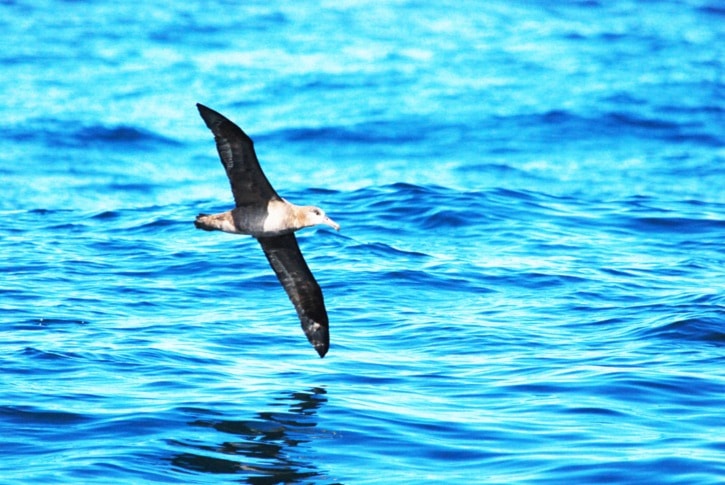While in Oregon recently, I went on a boat trip to look for seabirds. This is a very large group of birds that is completely unfamiliar to most people.
I suppose most people have heard of an albatross, but how many know that there are close to 20 different species; or that there are over 70 species in the petrels and shearwater family, and another 25 in the auks, murres and puffins family. There are many millions of birds roaming the world’s oceans whose only contact with land is for breeding, and most choose very remote rocky islets for that purpose.
Knowing that birders aren’t averse to spending some money to see new birds, there are many companies that run charter trips well off-shore for the purpose of looking for these ocean wanderers. One such trip ran from Newport, Oregon while we were there. The trip began at 7 a.m. and took us about 50 kilometres out to sea.
Oceans are huge, and there is never any guarantee that birds will be found in any numbers, but there’s always something out there to see!
On this particular trip, the most common bird we saw was the Sooty Shearwater; over 6,000 were encountered during the day. Nothing else approached these numbers but we did see significant numbers of several other sea-bird species: 25 Black-footed Albatross; 11 Northern Fulmar; 55 Pink-footed Shearwater; 4 Buller’s Shearwater; 3 Fork-tailed Storm-Petrel; 2 South Polar Skua; 6 Marbled Murrelet; 12 Cassin’s Auklet and the highlight of the trip – two Scripp’s Murrelet. This last species was significant because it is not common, and its small size makes it very difficult to find. At the first sign of trouble, it just dives and gets lost in the waves. This species was new to about 75 per cent of the birders on the boat, including myself.
In total, about 40 species were seen during the trip. Many of these are not strictly ocean-going birds, and are sometimes seen from shore. Despite the fact that the Scripp’s was a “lifer” for me, I still find the albatrosses the highlight of any ocean birding trip. Their exceedingly long wings allow them to soar on the wind effortlessly for hours. One species, the Wandering Albatross has the largest wingspan of any bird in the world. This varies from 2.5 to 3.5 metres depending on the age and sex of the bird. Compare this to the wing span of a Bald Eagle which ranges from 1.8 to 2.3 metres. The wing span of the Black-footed Albatross seen on this trip is about the same as the Bald Eagle.
One of the other benefits of ocean birding trip is the possibility of seeing whales and dolphins. On our trip we saw only one whale, a Minke Whale. We also saw Harbour Porpoise, Steller’s Sea Lion, California Sea Lion, Northern Fur Seal and Harbour Seal. And best of all – nobody got sea-sick this time!
